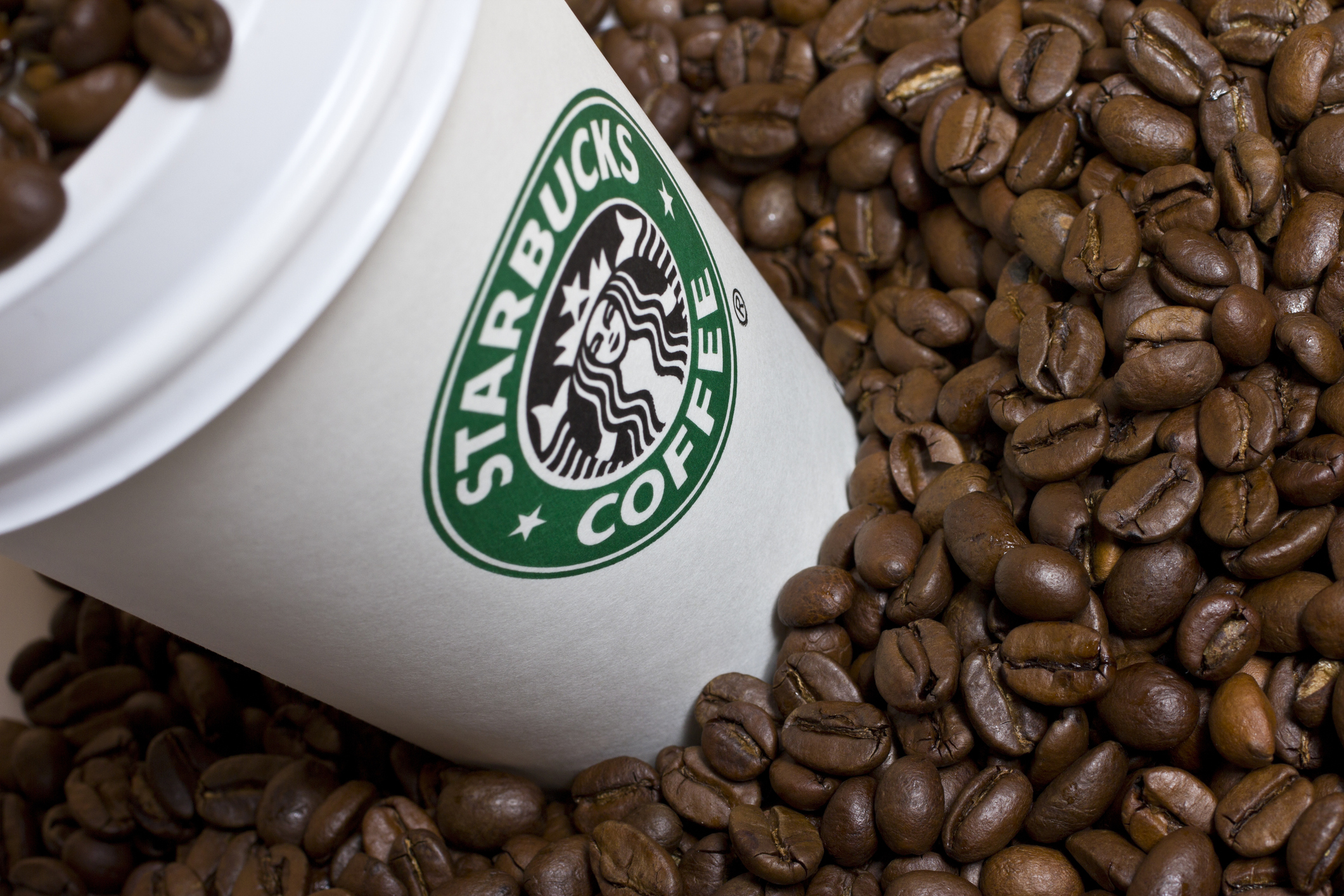Will Starbucks Perk Up?
The coffee chain has big plans for expansion, but growing pains are hurting its shares. The slump in its stock price could be a buying opportunity, though.
If you think there's a Starbucks on every corner now, just wait. The ubiquitous coffee chain's aggressive growth strategy involves doubling the number of its U.S. stores, from about 10,000 currently. Starbucks also plans to expand its international presence from more than 4,000 foreign stores to a whopping 20,000.
And that's a conservative estimate, says Citigroup analyst Glen Petraglia. "Starbucks has proven that the brand travels well, and, in all likelihood, they can continue to grow," he says. "There are many years of aggressive growth left." Investors, he adds, should view Starbucks' potential in context of other big U.S. chains with a substantial overseas presence.
One, in particular, comes to mind: McDonald's, which generates about two-thirds of its sales abroad and has been giving Starbucks a run for its money lately with its own line of cappuccinos, lattes and mochas. "Starbucks today is like McDonald's was in 1985," says Thomas Galvin, manager of the Excelsior Large Cap Growth fund. "I think you'll see Starbucks there in five to seven years. The company has a lot of room to grow on the international side."

Sign up for Kiplinger’s Free E-Newsletters
Profit and prosper with the best of expert advice on investing, taxes, retirement, personal finance and more - straight to your e-mail.
Profit and prosper with the best of expert advice - straight to your e-mail.
Although its long-term growth story sounds promising, Starbucks has been experiencing growing pains lately. Its shares (symbol SBUX), which closed at $26.10 on October 19, are down from $38 a year ago.
The Seattle-based chain has been struggling with soaring milk prices, along with rising energy and labor costs. To help offset those increased costs, the company raised prices on coffee and other drinks twice over the past year.
Meanwhile, Starbucks' sales growth is slowing at stores that have been open for more than a year. That, coupled with rising competition from fast-food chains such as McDonald's, prompted Banc of America analyst Brian Barish to downgrade Starbucks to "sell" on September 27. "We don't question whether or not Starbucks can go ... to its 40,000 units target," says Barish "but we are questioning the pace and the 'grace' with which that can happen."
The headwinds that Starbucks currently faces should let up in 2008, Petraglia wrote in a note to clients on October 19. Milk prices are expected to fall, and Starbucks expects to generate earnings growth of 20% to 22% during the 2008 fiscal year, which ends next September 30.
However, the ongoing tug-of-war between Starbucks bulls and bears will likely continue. Petraglia, who retained his "buy" rating on the stock, expects the shares to trade in the $25 to $30 range in the near term and reach $35 within 12 months.
The company, which is slated to report earnings for the fourth quarter of fiscal 2007 on November 15, warned in June that it would be hard-pressed to meet the high end of its 2007 forecast of 87 cents to 89 cents. The stock currently trades at 30 times analysts' 2007 earnings estimates of 87 cents per share and 25 times forecasted fiscal 2008 earnings of $1.05 per share, according to Thomson First Call.
Galvin sees the slump in Starbucks' shares as an opportunity for long-term investors. "Even though earnings haven't been solid, growth rates are still attractive," he says. "Starbucks has created a unique experience that draws people back."
Get Kiplinger Today newsletter — free
Profit and prosper with the best of Kiplinger's advice on investing, taxes, retirement, personal finance and much more. Delivered daily. Enter your email in the box and click Sign Me Up.
-
 Stock Market Today: Stocks Gain on Tech, Auto Tariff Talk
Stock Market Today: Stocks Gain on Tech, Auto Tariff TalkThe Trump administration said late Friday that it will temporarily halt tariffs on some Chinese tech imports.
By Karee Venema
-
 Sam's Club Plans Aggressive Expansion: Discover Its New Locations
Sam's Club Plans Aggressive Expansion: Discover Its New LocationsSam's Club expansion plans will open up to 15 new stores each year. Learn where they plan to open in 2025.
By Sean Jackson
-
 4 Turnaround Stocks to Consider – and 2 More to Keep an Eye On
4 Turnaround Stocks to Consider – and 2 More to Keep an Eye OnA turnaround stock is a struggling company with a strong makeover plan that can pay off for intrepid investors.
By Nellie S. Huang
-
 Fed Leaves Rates Unchanged: What the Experts Are Saying
Fed Leaves Rates Unchanged: What the Experts Are SayingFederal Reserve As widely expected, the Federal Open Market Committee took a 'wait-and-see' approach toward borrowing costs.
By Dan Burrows
-
 Starbucks Stock Pops as Turnaround Efforts Lead to Earnings Beat: What to Know
Starbucks Stock Pops as Turnaround Efforts Lead to Earnings Beat: What to KnowStarbucks stock is higher Wednesday after the coffee chain beat expectations for its fiscal first quarter as its "Back to Starbucks" efforts take shape.
By Joey Solitro
-
 Fed Sees Fewer Rate Cuts in 2025: What the Experts Are Saying
Fed Sees Fewer Rate Cuts in 2025: What the Experts Are SayingFederal Reserve The Federal Reserve cut interest rates as expected, but the future path of borrowing costs became more opaque.
By Dan Burrows
-
 Stock Market Today: Markets Waver as Inflation Continues to Ease
Stock Market Today: Markets Waver as Inflation Continues to EaseStocks gave up early gains as waning consumer price inflation leaves rate-cut bets essentially unchanged.
By Dan Burrows
-
 What's Behind Starbucks Stock's New Sell Rating?
What's Behind Starbucks Stock's New Sell Rating?Starbucks stock has rallied hard since Brian Niccol was tapped as the coffee chain's new CEO, but one analyst thinks turnaround plans will be costly.
By Joey Solitro
-
 Why Is Warren Buffett Selling So Much Stock?
Why Is Warren Buffett Selling So Much Stock?Berkshire Hathaway is dumping equities, hoarding cash and making market participants nervous.
By Dan Burrows
-
 Fed Cuts Rates Again: What the Experts Are Saying
Fed Cuts Rates Again: What the Experts Are SayingFederal Reserve The central bank continued to ease, but a new administration in Washington clouds the outlook for future policy moves.
By Dan Burrows